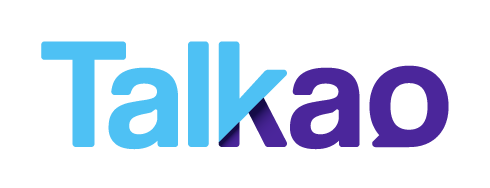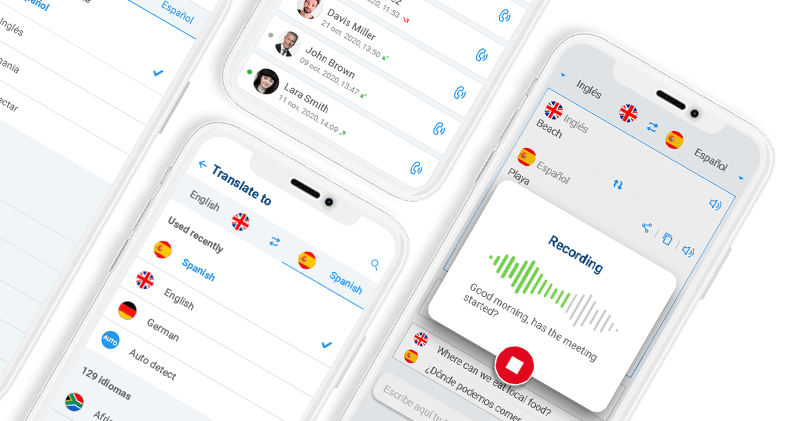
Multilingual networking is one of the most valuable activities for professional growth. Connecting with people who share common interests allows us to expand our network of professional contacts. It is undoubtedly a key element when growing a business into new markets, regions, or even languages. Yet one often-overlooked aspect is how networking can also bring significant personal benefits.
Connecting with others—networking—opens the door to new perspectives and ways of seeing the world. When we build relationships with people from different cultures and backgrounds, we naturally reduce our conceptual biases. In other words, we become more open-minded, culturally aware, and able to view life from a broader perspective.
For all these reasons—and many more we’ll explore—networking is incredibly valuable. But do we really understand what effective networking means and how to do it right?
Today, we’ll explore the essential foundations of networking, the critical role of language, and how AI can be your greatest ally in the process.
What is multilingual networking and why is it not as modern as you think?
Today, we often give new names and trendy labels to things we’ve always done. Sharing an office is now coworking. Living with roommates is coliving. Giving a ride to coworkers? That’s carpooling. While these concepts might sound stylish or cutting-edge, they’re actually age-old practices.
The same goes for multilingual networking. This activity, which seems modern or even tech-forward, is simply the act of building personal and professional connections. In simple terms, it means creating relationships with others to grow your network. But why? The goals vary—from offering your services, finding clients, or even just creating social bonds.
Despite its trendy name, networking is what has helped humans survive and thrive. Surprised to hear that? You might be even more surprised to know that networking is possibly the oldest human activity. Here’s why.
We’ve been networking since caves and mammoths
Our ancient ancestors, the cave-dwellers who roamed the earth millions of years ago, quickly realized that survival alone was nearly impossible. They discovered that living in groups provided safety, warmth, and strength. Working together made it easier to hunt large animals and share resources.
They learned that living in community and collaborating gave them a better chance at survival. As a result, they developed a need that hadn’t existed before: the need to belong, to depend on others. And just like that… the first networking in history was born.
From there, humans began to form communities, which grew into cities. Societies evolved, tasks were divided, and people understood that the more connections they had, the better life became. That instinct to connect has been passed down to us—we’ve made it an essential part of our daily lives.
So, in short, what we call networking today is actually a deeply human need. But it’s important to understand that modern networking goes beyond just meeting people. As you’ll see, there’s much more beneath the surface.

The foundations of modern multilingual networking: A growth strategy
While the need for social connection is universal, the way we approach it—and the benefits we gain from it—are not. From the most remote villages to the busiest cities, people engage with others on a daily basis. However, modern networking is fundamentally different from casual socializing. Today, it’s a structured, intentional activity supported by strategies that help you make the most of your connections.
According to recent theories on multilingual networking, this practice involves much more than simply meeting new people. It’s about applying specific methods and tools that turn networking into a true art. These strategies are often grounded in social, business, and psychological techniques designed to boost effectiveness and ensure long-term results.
Despite the growing number of in-depth studies and proven techniques, many people still misunderstand the real purpose of networking. In other words, they don’t clearly know what it’s for—or what they stand to gain from it.
That’s why we’ll now take a brief look at the key advantages and benefits of strategic multilingual networking.
Professional benefits of multilingual networking
Without a doubt, multilingual networking is one of the most powerful strategies in business and professional development. Expanding your contact network allows for organic and sustainable growth over time. It’s also one of the most effective ways to build valuable relationships that enhance your stability and positioning in the market. Here are some of the key benefits of networking at a professional level:
- Access to job opportunities: Many job openings are filled through personal connections before ever being advertised.
- Professional visibility: Boost your presence in your industry and stand out from other professionals.
- Exchange of innovative ideas: Sharing experiences can lead to new strategies and creative solutions.
- Strategic partnerships: Open the door to collaborations, synergies, and joint ventures.
- Mentorship and learning: Find mentors—or become one—and grow together.
- Client and sales generation: Essential for entrepreneurs and freelancers seeking new business.
- Market updates: Stay informed on the latest trends, tools, and developments in your field.
- Stronger personal brand: Connections help reinforce and grow your professional identity.
- Better decision-making: Expert advice can guide you during crucial moments.
- Career growth: Networking accelerates your journey toward new goals with greater support.
Personal growth through networking: Key advantages
While networking is often associated with professional environments, it also offers significant personal development benefits. Expanding your personal network naturally broadens your worldview and exposes you to new ideas and experiences. Here’s how networking can positively impact your personal life:
- Develop social skills: Improve communication, empathy, and active listening.
- Boost self-confidence: Engaging with others builds self-esteem and personal security.
- Expand your social circle: Connect with like-minded individuals and create meaningful relationships.
- Find personal inspiration: Discover motivating and uplifting life stories.
- Emotional support: Build a trusted network for challenging times.
- Knowledge sharing: Learn from others while sharing your own insights.
- Stress management: Positive connections help reduce feelings of isolation.
- New opportunities: Not all opportunities are work-related—some may involve travel, creative projects, or collaborations.
- Strengthen core values: Interacting with diverse people reinforces empathy, compassion, and respect.
- Enhance critical thinking: Gain new perspectives that help refine your worldview and decision-making.
Can networking be applied across different languages?
When we understand networking as a way to connect with others, imagine what could happen if there were no limits. By expanding your reach and breaking language barriers, networking becomes a truly global strategy. In other words, you can grow your network by connecting with people from different regions, languages, and backgrounds.
This is where multilingual networking becomes something like “networking on steroids.” People who speak multiple languages often come from diverse cultural backgrounds, which means networking in other languages gives you access to communities vastly different from your own. And in terms of personal growth, that’s incredibly powerful.
You can connect with individuals who have different customs, beliefs, and worldviews—an enriching experience that can broaden your perspective and multiply your impact. Over time, this leads to building relationships on multiple levels, far beyond your usual circle, allowing you to grow holistically and become a better version of yourself.
But beyond personal development, networking in multiple languages also brings major advantages in the business world. Let’s take a look at some of the most important ones.
Business advantages of multilingual networking
When we think of networking, we often associate it with business and professional development—and for good reason. Multilingual networking is one of the fastest, most effective, and sustainable ways to grow your business. Why? Here are some powerful reasons:
Access to new international markets
Multilingual networking is a strategic tool for global expansion. By connecting with professionals from other countries, you gain insights into local markets, adapt to customer needs, and identify business opportunities before your competitors.
Speaking your clients’ language positions your company as open, accessible, and ready to face international challenges. It allows you to engage in multilingual forums and industry events.
Understanding different cultures also enhances your negotiation skills and adaptability—both essential to conquering new business territories. In short, investing in multilingual networking lays the groundwork for sustainable internationalization.
Improved communication with diverse clients
Effective communication is the foundation of lasting customer relationships. When your company speaks your audience’s language, you convey professionalism, empathy, and commitment.
Multilingual networking enables you to better serve customers across cultures, solve problems faster, and personalize your approach to each market.
This not only improves customer experience but also strengthens your brand’s reputation as a trustworthy and relatable business. From after-sales support to targeted marketing campaigns, language adaptation is now a competitive edge.
It’s not just about translation—it’s about truly connecting in your customer’s emotional language.
More opportunities for collaboration
Multilingual networking doesn’t just connect you with clients—it opens the door to international partners, suppliers, and investors. Being able to communicate in multiple languages boosts your chances of joining collaborative projects, global tenders, and cross-border ventures.
It also helps reduce costs, speed up innovation, and gain access to new technologies and expertise. A multilingual presence on platforms like LinkedIn and global industry events enhances your image as a forward-thinking company.
In today’s business landscape, multilingualism signals readiness for international cooperation and fosters innovation through multicultural teamwork.
Stronger differentiation from competitors
In saturated markets, differentiation is key. A multilingual networking strategy positions your company as a global brand with international vision. While competitors focus only on their native language, you’ll be connecting with wider audiences—showcasing adaptability, inclusivity, and modernity.
This boosts your corporate image and strengthens your global brand presence. Moreover, top-tier brands often seek collaborations with businesses that share their global mindset. Internally, this approach cultivates a more open and proactive company culture—rich in diverse perspectives and ready for change. Linguistic differentiation becomes a long-lasting, sustainable competitive advantage.
A more diverse and skilled team
Multilingual networking doesn’t just impact your external growth—it transforms your internal team. Opening your network to other languages grants access to highly skilled international talent. This enriches your workplace with fresh ideas, problem-solving approaches, and cross-cultural perspectives.
Multilingual staff also improve customer service and increase your company’s operational flexibility. Such diversity reflects an inclusive environment—one that attracts and retains younger, global-minded professionals. A team like this not only adapts to current market needs, it anticipates the future. Investing in multilingual networking means building a stronger, more dynamic, and future-ready business.
Given all these advantages, it’s natural to ask: How can you network in different languages if you don’t speak them?
That’s where Talkao’s translation tools come in—discover how they can become your best ally.

AI translation technology: A key to business growth
You might be thinking: “Okay, all this multilingual networking sounds great, but how can I apply it if I don’t speak other languages?” And you’re absolutely right.
Building new personal and professional relationships is already challenging—even in your native language. Add the language barrier, and it can feel almost impossible. Not being able to express yourself clearly is a major limitation.
However, technology has advanced far beyond air fryers and smartphones with fancy cameras. Thanks to AI-powered translation tools, it’s now easier than ever to communicate naturally and effectively in multiple languages. These tools are accurate, intuitive, and incredibly easy to use. Let’s look at the most powerful ones.
AI Voice Translation
Mobile apps like Talkao Translate let you have real-time conversations in over 125 languages, right from your phone. Its real-time voice translation feature eliminates awkward pauses and long waits. With AI and personalized learning, translations sound more human, natural, and emotionally in tune with how people actually speak.
Text Translator
Whether it’s chat messages, emails, social media posts, or business documents, Talkao’s text translation, document translator, and built-in dictionary functions allow you to communicate fluently and confidently in nearly any digital medium.
Image-to-Text Translation
You no longer need to manually transcribe text for translation. The Talkao camera translator reads text directly from images, signs, documents, and virtually any type of printed material—just by pointing your phone’s camera, regardless of the language.
Video Translation
Hosting a live video call or online meeting? The Talkao video translator offers instant, natural-sounding translations during live streaming or video calls. No need for expensive equipment or the latest smartphone—just your device and a Wi-Fi connection.
As you can see, networking has never been easier, faster, or more effective. Today, it doesn’t matter where you are, what language you speak, or who you want to connect with.Thanks to AI translation technology, you can now build relationships and grow your business—with anyone, anywhere, in any language.










Newsletter